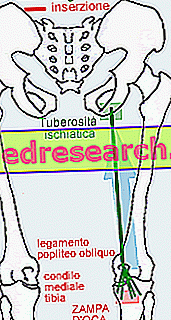Bad for muscles?
Whether they assail us after a long period of inactivity or after a very intense effort pain and muscle stiffening are feelings that we have all experienced at least once in a lifetime.

In reality the lactate produced during exertion is metabolized in the blood and liver with a certain rapidity and already after a couple of hours from the end of the exercise its blood concentrations fall within the norm. The pain symptoms ( DOMS ) must therefore be attributed to factors independent of lactic acid.
Although the origin of muscle pain has not yet been completely clarified, its appearance appears to be linked to several factors. Among these the most important are:
- muscle breakdown
- inflammatory response to these microtraumas
- excessive contractions and muscle spasms
- accumulation of metabolites in the muscles
A very intense effort, especially if the subject is not well trained, on a muscular level and not only, causes numerous microlesions. It is precisely these small traumas that allow the body to adapt to the effort by improving its functional capabilities.
However, all this also has negative implications, since a trauma, albeit slight, is still a stressful and painful event.
The pain in the muscles and the consequent stiffening, which in some cases persists for several days, are strictly dependent on the type, duration and intensity of the exercise.
The most painful symptomatology arises following eccentric and isometric exercises. Examples of eccentric exercises are downhill running and the negative phase of a bench press. In both cases the muscle stretches developing tension to counteract on one side the falling forward of the body and on the other the descent of the balance towards the chest.
An exercise is instead defined as isometric when the muscle contracts without lengthening or shortening. Pushing your arms firmly against a wall is a typical example of isometric contraction.
When we approach a bottle to the shoulder (the classic dumbbell curl shown in the figure) the biceps muscle contracts to allow movement. At the same time the triceps muscle located at the back of the arm relaxes and stretches. If this did not happen there would be a strong contrast between the actions of the two muscles which, as we know, have the opposite function. The very fine nervous mechanism that coordinates the contraction and relaxation of the agonist and antagonist muscle is synchronized by the activity of the brain.
When we go to the gym after a long period of inactivity, the central nervous system is not perfectly able to coordinate muscle contraction during movements we are not used to. The stretching muscle develops in an untrained an increased resistance that is overcome by the contracting muscle. This phenomenon involves micro-cracks at the muscular level that occur even when the muscle is stretched too far during the movement by subjecting both tendon and muscle fibers to excessive tension. The set of all these microtraumas is one of the main components that underlie the painful symptoms.
All of this explains why when you change your training program drastically, you feel that pain and that muscular stiffening typical of the sedentary subject who approaches for the first time a demanding physical activity.
Another important factor is probably related to exercise spasm. Basically it is a circumstance in which some muscle fibers maintain the contraction even after the end of the movement.
When these traumatic events occur in general, the extent of pain symptoms increases up to 48 hours after the effort and then resolves positively within 3-6 days depending on the duration and intensity of the effort performed. The damaged cells heal and simultaneously witness a process of reorganization and functional adaptation that increases the strength of the muscle. In the two or three training sessions after the first one the perception of pain decreases until it disappears completely after three or four workouts.

How to protect yourself from muscle tightening?
First of all, to defend muscles and tendons from excessive strains it is necessary to start slowly and progress slowly. Useless and I would add painful to try the blinders in a new activity without being physically prepared.
Stretching or stretching at the end of the session helps to alleviate the pain by acting on that component which we have called muscle spasm. Some studies have shown the beneficial effect of vitamin E administration in reducing pain and inflammation.
Given the antioxidant properties of this vitamin, avoiding the use of specific supplements, it is recommended to simply adopt a diet rich in fruits and vegetables. Although this is a rather frequent and generalized recommendation it is good to reiterate once again the importance it has in the prevention of many diseases.



